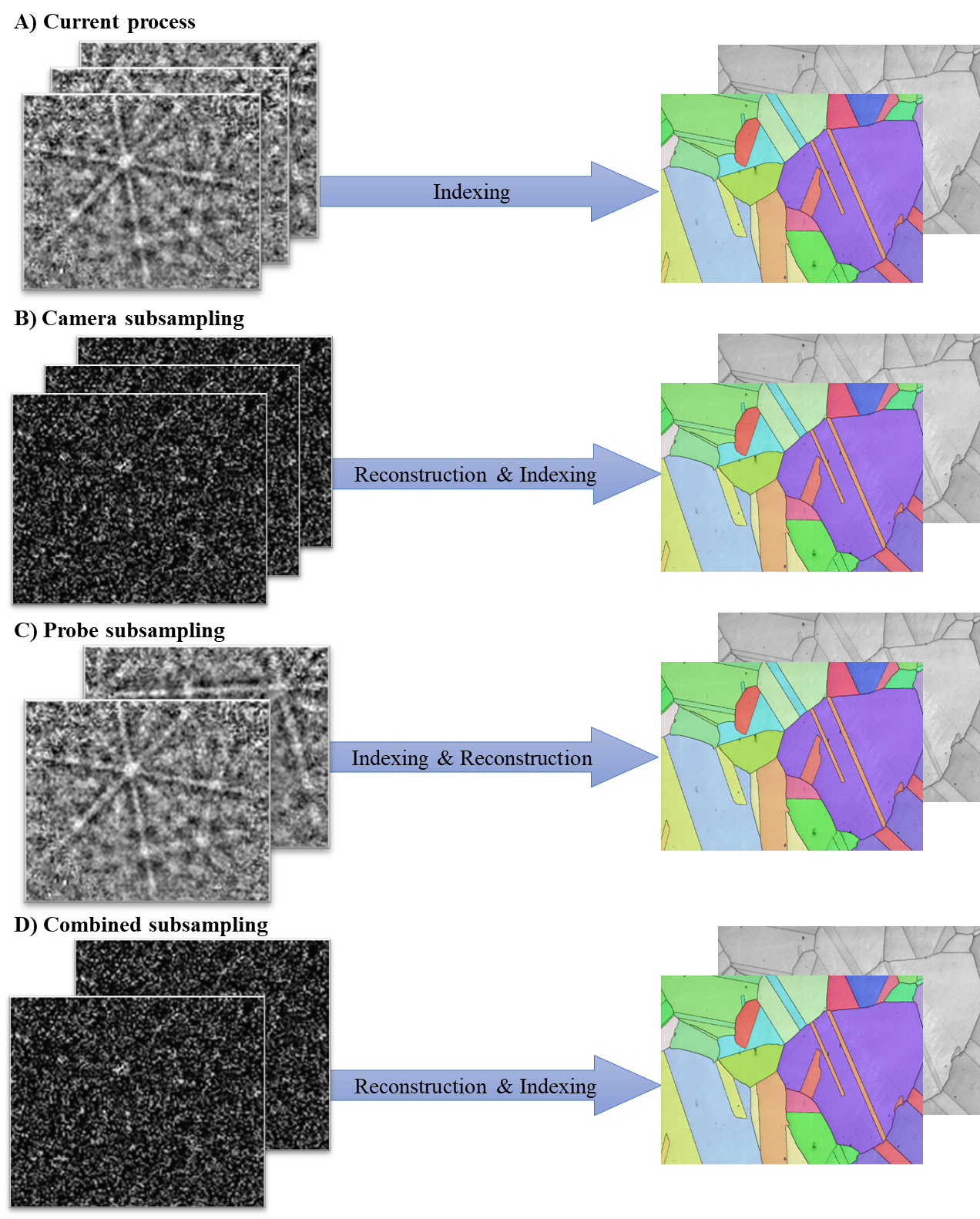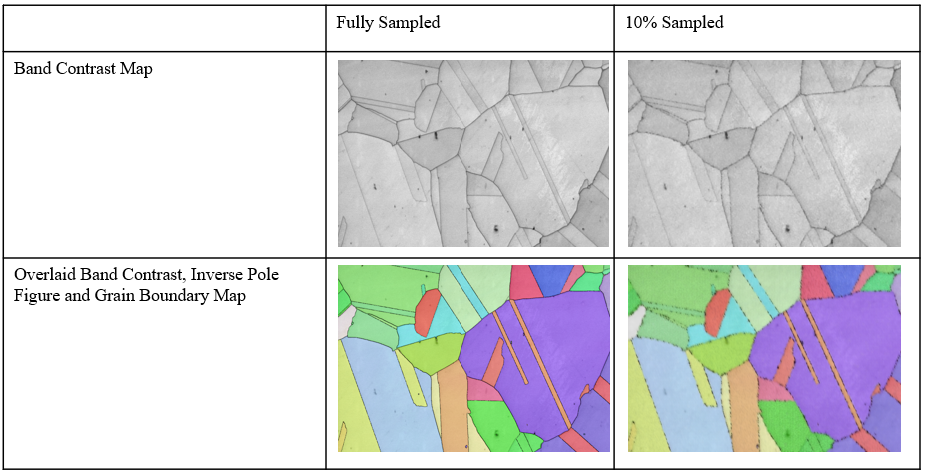Subsampling Methods for Fast Electron Backscattered Diffraction Analysis for SEM
- Abstract number
- 117
- Presentation Form
- Poster & Flash Talk
- DOI
- 10.22443/rms.mmc2023.117
- Corresponding Email
- [email protected]
- Session
- EMAG - EM Data Processing & Analysis
- Authors
- Zoë Broad (1), Daniel Nicholls (1), Jack Wells (2), Amirafshar Moshtaghpour (1, 4), Alex Robinson (1), Robert Masters (3), Louise Hughes (3), Nigel Browning (1)
- Affiliations
-
1. Department of Mechanical, Materials and Aerospace Engineering, University of Liverpool
2. Distributed Algorithms Centre for Doctoral Training, University of Liverpool
3. Oxford Instruments Nanoanalysis
4. Correlated Imaging Group, Rosalind Franklin Institute
- Abstract text
Electron backscatter diffraction (EBSD) is an SEM based technique used for the characterization of microstructures, providing crystallographic information such as grain morphology and crystal orientation. Through a raster scan of the sample, a set of EBSD patterns are acquired which are indexed and processed to produce a full map of the sample, with each pixel representing one EBSD pattern. Acquisition speed and processing time has significantly improved over the years through innovations such as the CMOS detector, which enables high resolution images to be taken at higher speeds of 6000 patterns per second (pps), in comparison to the acquisition speeds of 1500 pps previously achieved by CCD detectors, which has previously been used for EBSD pattern acquisition [1]. Additionally, automated indexing is commonplace in commercial systems, allowing the Kikuchi bands to be easily detected and analysed. Despite these advances, EBSD still has long acquisition times, resulting in a compromise between quality and time to be reached [2].
Compressive sensing is a signal processing technique, allowing data to be collected and processed efficiently through subsampling and reconstruction [3,4]. In recent studies it has been found to be effective in numerous microscopy applications, notably in scanning transmission electron microscopy (STEM) [5,6,7,8]. Through subsampling these signals, data can be acquired at a greater speed and reconstructed using an inpainting algorithm, which could significantly improve the speed of acquisition and processing with regards to EBSD detection.
Presented here is an application of compressive sensing methods to an EBSD dataset of a Ni-superalloy, with the motivation of taking advantage of the speed-increasing aspects of compressive sensing. The subsampling approaches proposed are camera subsampling, probe subsampling and combined subsampling. Camera subsampling is simulated by randomly subsampling the produced EBSPs from a full raster scan of the area which are then reconstructed before being processed in order to produce a full map. In order to simulate probe subsampling the full EBSPs would be retained, simulating a random subsampled scan of the sample. Combined subsampling combines both of these concepts, with subsampled EBSPs being reconstructed to generate an incomplete map of the area, which can then be reconstructed to produce qualitatively equivalent data to a fully sampled sample, whilst increasing the theoretical acquisition speed. An application of 10% camera subsampling and 10% probe subsampling is, in theory, 100 x faster.
Figure 1. Proposed subsampling and reconstruction methods for EBSD: (A) Current method of full data acquisition; (B) Camera subsampling: subsampling of the EBSP; (C) Probe subsampling: subsampling of the sample scan; (D) Combined subsampling: subsampling of the sample and of the EBSP.
Figure 2. Comparison of fully sampled maps and maps obtained through reconstruction after 10% sampling ratio probe subsampling simulation
- References
[1] J. Goulden et al., Microsc. Microanal., 24 (2018): 1128-1129
[2] B. Winiarski et al., Ultramicroscopy 226 (2021): 113315
[3] E. J. Candès et al., IEEE Transactions on Information Theory, 52(2) (2006) : 489-509
[4] D. L. Donoho, IEEE Transactions on Information Theory, 52(4) (2006) : 1289-1306
[5] N. D. Browning et al., Applied Physics Letters, 122 (2023): 050501
[6] D. Nicholls et al., Ultramicroscopy 223 (2022): 113451
[7] D. Nicholls et al.,IEEE International Conference on Acoustics, Speech and Signal Processing, (2022): 1586-1590
[8] D. Nicholls et al, arXiv preprint (2022), arXiv:2211.03494


